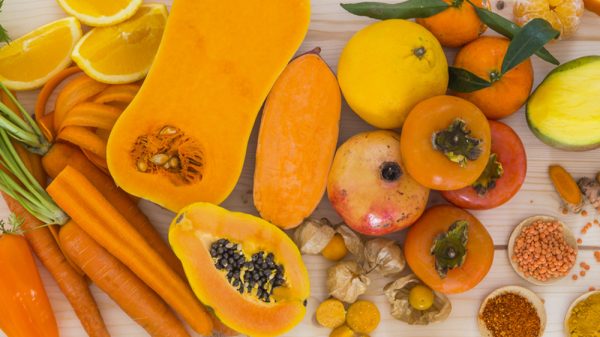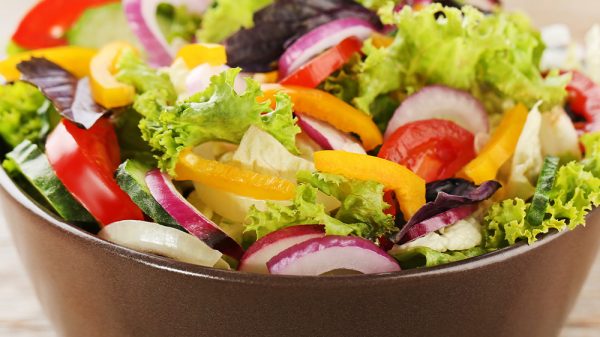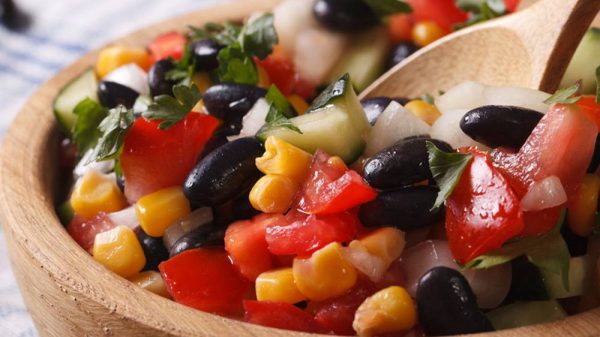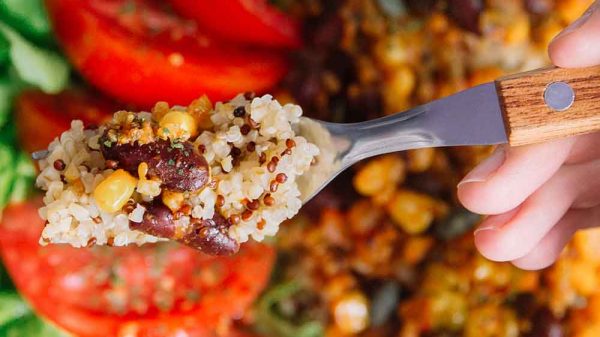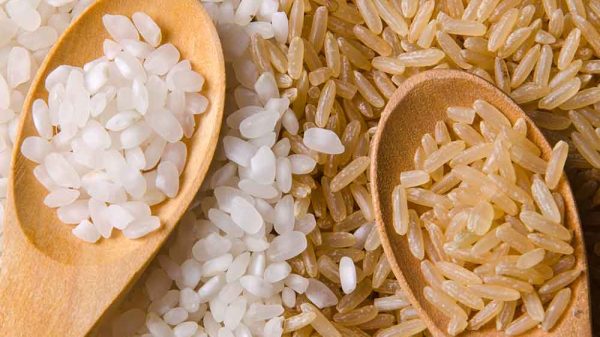Granola is popular as a breakfast cereal, yogurt-topper, or just plain by the handful. We all love granola as a quick on-the-go snack. It’s sweet and delicious and satisfies our craving for crunch…but is granola good for you? Find out how to choose the most nutritious store-bought granola by looking for health-promoting ingredients and avoiding harmful ingredients.
What to Look for in Granola
The shelves in the grocery store are packed with options for granola bars, granola cereals, and other plain granola options. How do you know which one will support your health? Granola nutrition revolves around the foods used to make it, and the ingredients list will reveal which granola affords the most health benefits.
We’ve boiled it down to the three key ingredients that should be in your granola.
1. Whole Grains
Grains usually make up the base of granola. These grains should be as unprocessed as possible to preserve the micronutrient and fiber content. Whole grains are rich in fiber, which supports digestive and cardiovascular health. The dietary fiber found in whole grains also facilitates weight loss. In addition to fiber content, whole grains are rich in vitamins, minerals, and antioxidants that support healthy cellular function. Because the carbohydrates in whole grains are packaged with fiber and micronutrients, your body breaks them down more slowly. As a result, you receive a steady release of energy over many hours, rather than an immediate blood-sugar spike and subsequent crash.
Here are a few whole grains to look for in your store-bought granola.
Rolled Oats
The term “rolled” signifies that the oats are minimally processed to remove the tough outer husk and flatten them, making them easier to eat. You typically use rolled oats when preparing oatmeal or overnight oats, but they are used in granola too. Plus, rolled oats are packed with fiber, protein, and vitamins. Just a half-cup serving of oats provides 6 grams of protein and 4 grams of fiber. (1)
Buckwheat Groats
Buckwheat is less common as a breakfast cereal and granola ingredient, but it is particularly nutritious. “Groats” is a term that describes buckwheat grains that have had the husk removed, but preserve the bran layer and other parts of the grain. A half-cup serving of buckwheat groats provides a whopping 8 grams of protein and 8 grams of fiber. (2)
Puffed Grains
Puffed grains get their crunchy texture from being dehydrated and exposed to heat and pressure. You may be familiar with puffed grains like popcorn and puffed rice used in Rice Krispies. In addition, millet, amaranth, and quinoa are ancient grains that are available in puffed form and add a delicious crunch to granola. Rice, millet, amaranth, and quinoa are filled with fiber, protein, and antioxidants in their natural form. However, research shows that the puffing process leads to the loss of micronutrients. (3)
Still, puffed grains are generally sugar-free and retains some vitamins. While oats or groats should provide the bulk of the carb content in granola, puffed grains are a decent addition for taste and texture.
2. Nuts and Seeds
Nuts and seeds are excellent ingredients in making a hearty granola that’s rich in protein, healthy fats, fiber, and other micronutrients. Nuts and seeds are also energy-dense and contribute to many of the calories in granola.
Pecans
A study published in Nutrients evaluated the impact of pecan consumption on cardiovascular and metabolic risk in 26 overweight or obese adults. Researchers replaced 15% of the study group’s daily calorie intake with pecans, while the control group followed the standard American diet. Results revealed an association between pecan consumption and reversed insulin resistance and improved insulin production. (4)
Reversing insulin resistance and improving insulin production are important for decreasing the risk of metabolic syndrome, diabetes, and heart disease.
Consuming pecans in your granola is a great way to get monounsaturated and polyunsaturated fats- which are healthy fats. A quarter-cup serving of pecans also provides 3 grams of protein, 3 grams of fiber, and minerals like zinc and magnesium. (5)
Walnuts
Walnuts contain health-promoting monounsaturated and polyunsaturated fats and contain magnesium, vitamin B6, iron, protein, and fiber. A quarter-cup serving of walnuts provides 5 grams of protein and 2 grams of fiber. (6)
Walnuts are also filled with antioxidant compounds that help prevent disease. On a daily basis, the cells in our body are exposed to toxins, contaminants, irritants, and other particles that cause a buildup of reactive oxygen species. These reactive oxygen species, also known as free radicals, slow down normal cellular processes like DNA repair or energy production. Over time, if free radicals are not cleared from the cell, they will contribute to tissue damage that expedites aging and increases the risk of disease. Eating foods rich in antioxidants supports our cells in getting rid of free radicals so our organ systems can operate smoothly.
A study published in the Journal of Alzheimer’s Disease assessed the impact of walnut consumption on oxidative stress in rat models. (7) Researchers incorporated walnuts into the study group’s diet, while the control group’s diet contained no walnuts. After 15 months, results showed that rats who had been consuming walnuts experienced lower levels of free radicals, less oxidative damage, and improved antioxidant enzyme activity. In contrast, the control group experienced more oxidative damage and impaired antioxidant enzyme activity. Because antioxidant activity is critical for protecting neurological function, walnuts may play a role in preventing or slowing the progression of neurodegenerative diseases such as Alzheimer’s disease.
Almonds
Almonds are filled with healthy fats and can be an important part of a diet that improves cholesterol ratios by lowering low-density lipoprotein (the bad kind of cholesterol) and increasing high-density lipoprotein (the good kind of cholesterol). A quarter-cup serving of almonds yields 6 grams of protein and about 4 grams of fiber, while also providing calcium and iron. (8)
The healthy fats in almonds may help fight disease. A study published in Pharmaceutical Biology reveals the anticancer properties of almonds. (9) Researchers assessed the impact of almond oil on the growth of colon cancer cells and found that almond oil significantly decreased the proliferation of malignant cells.
Pumpkin Seeds
All components of pumpkin are nutritious, including the seeds. A quarter-cup serving of pumpkin seeds provides 9 grams of protein and 3 grams of fiber. (10) Research shows that pumpkin seeds are rich in anti-inflammatory agents like carotenoid compounds. Carotenoids like beta-carotene help protect against tumor growth and cardiovascular disease. (11)
The monounsaturated fats in pumpkin (oleic acid) and polyunsaturated fats in pumpkin seeds (linoleic acid) are health-promoting ingredients. These fats demonstrate cardioprotective effects by helping improve insulin ratios and preventing metabolic syndrome.
Flaxseeds
Flaxseeds have been revered as a superfood for many years, known for their high concentration of healthy fats, fiber, protein, and nutrients.
A recent article published in Nutrients reviews the studies proving the health benefits of flaxseeds. (12) Flaxseeds are an excellent source of alpha-linolenic acid, which is a type of omega-3 fatty acids that supports brain health and decreases inflammation.
Flaxseeds have a marked effect on blood pressure. In a study conducted at St. Boniface Hospital Centre in Winnipeg, Canada, researchers administered 30 grams of milled flaxseed to patients at daily intervals over a period of 6 months. (13) Results revealed that these patients experienced a significant decrease in both systolic and diastolic blood pressure in comparison to the control group.
Keep in mind that whole flaxseeds have a hard coating that makes it difficult for the human digestive system to access the healthy nutrients trapped inside. Grinding or milling flaxseeds removes the tough exterior and makes the nutrients more bioavailable. When examining the ingredients list in granola, look for flaxseeds that have been ground.
Chia Seeds
Like flax seeds, chia seeds are high in fiber and provide lots of alpha-linolenic acid. Chia seeds are similar in color and texture to flax seeds and must be soaked or ground to increase bioavailability. A recent review published in Nutrients compiles the data on the health benefits of chia seeds, which are also good sources of calcium, iron, magnesium, phosphorus, vitamin B1, and niacin. The protein in chia seeds also provides many essential and non-essential amino acids that the body can utilize to manufacture neurotransmitters, facilitate metabolic processes, and support muscle synthesis.
Research has shown that chia seeds may play a role in promoting liver health by lowering liver enzyme levels. Chia seeds also show promise in mitigating risk factors for metabolic disease by improving cholesterol levels and lowering blood pressure. (14)
Hemp Seeds
Hemp seeds have a mild flavor and provide healthy fats and protein. Three tablespoons of hempseed provide 9 grams of protein. (15) The protein in hemp seeds provide all essential amino acids that we need to consume through our diets. Research shows that compounds in hemp seeds exhibit antioxidant activity, support gut health, and have neuroprotective effects. (16)
3. Dried Fruit and Natural Sweeteners
Dried fruit adds a natural sweetness to granola, as well as extra nutrients and antioxidants. Excellent options for dried fruits include cherries, raisins, prunes, and apricots. Goji berries are another great choice. These exotic berries taste slightly more bitter than conventional dried fruit. However, the compounds in dried goji berries are potent antioxidants. The vitamin C in dried fruits supports immune health and facilitates healing, while antioxidants protect against free radical activity and tissue damage. Additionally, some fruits even contain some protein!
Dates are particularly high in natural sugar and work well as a sugar substitute in granola, smoothies, and desserts. When snacking on granola sweetened with dates, you may not be able to tell that it contains no added sugars.
Erythritol
Erythritol is naturally present in fruits and may be isolated and used as a sweetener. Erythritol has essentially zero calories, functions as an antioxidant, and doesn’t spike your blood sugar. (17) The only downside to erythritol is that its sweetness concentration is very low, and a lot is needed to effectively replace sugar.
Ingredients to Avoid
Harmful ingredients can be hidden in your store-bought granola. These are the two main things to avoid:
1. Refined Sugars
Stay away from granola that contains any added sugar. Processed sugars are simple carbs, meaning your body immediately breaks them down into glucose. Plus, you want to make sure the granola you’re eating provides sustained energy instead of a quick burst of fuel that ultimately makes you more tired.
When checking the ingredients, watch out for anything with the word “syrup,” and this is not limited to the dreaded “high fructose corn syrup.” Refined sugars are often disguised as something healthier than they actually are, such as cane syrup, maple syrup, and brown rice syrup. These terms tend to be misleading because the cane plant and brown rice are associated with whole food products. When something is described as a syrup, this means that it has been manufactured to remove all nutritional value, leaving the liquid sugar remaining.
2. Unhealthy Fats
Not all fat is bad; the polyunsaturated and monounsaturated fats found in nuts, seeds, and olive oil support metabolic health and cardiovascular functioning. The fat in coconut oil is also safe since the carbon chains in coconut fatty acids are medium-chain triglycerides, which is a healthier form of saturated fat. On the other hand, saturated fats from meat and dairy products contain longer chains. Our bodies process long-chain saturated fats in a way that increases the risk for metabolic syndrome and heart disease.
Look out for both partially and fully hydrogenated oils. Partially hydrogenated oils contain trans fats, which are the most harmful fats that markedly increase the risk of high cholesterol and heart disease. Though not quite as harmful as partially hydrogenated oils, fully hydrogenated oils still negatively impact health. Many packaged products use hydrogenated oils since they tend to have a longer shelf-life than other unprocessed oils.
Making Your Own Homemade Granola
Sometimes, the grocery store doesn’t have exactly what we’re looking for, which yields the perfect opportunity to make your own granola.
Andrea Hannemann is an influencer and blogger who follows a plant-based diet. She includes lots of healthy, vegan recipes on her blog, including a recipe for granola. Try her protein-packed rawnola – a healthy treat that requires no baking. (18) You can also follow her Instagram account earthyandy, for more helpful tips and plant-based recipes like her rawnola.
You can also experiment with creating your own granola recipe using a combination of nutritious grains, nuts, seeds, and dried fruits.
Granola Alternatives
In a pinch, you can also combine natural ingredients to create a quick trail mix that is tasty and crunchy, like granola. For example, try combining chopped walnuts, puffed rice, dried cherries, pumpkin seeds, and a few dark chocolate chips for sweetness. For a grain-free option, leave out the puffed rice.
Muesli is also a great alternative to granola and is common breakfast food in Europe. When looking at muesli vs granola, both options contain many of the same ingredients and can provide the nutrients you need to support your health and energy throughout the day. A key difference is that muesli is most palatable when eaten with milk or milk substitute since it can be very dry when eaten plain. Granola, on the other hand, can easily be consumed as a snack on its own.
Other Things to Consider: Granola as Part of a Healthy Diet
- If you’re working to achieve a weight loss goal, granola can be incorporated into your diet as a fiber-filled, protein-packed snack. Just be sure to stick to the serving size, since granola can also be high in calories.
- After you’ve chosen the healthiest option for granola or made your own, try eating with fresh fruit or low-fat greek yogurt to incorporate even more fiber and protein into your diet. If you follow a vegan diet, try coconut milk yogurt as an alternative.
- If you see the term “tocopherols” on the ingredients list, don’t fear: these are simply derivatives of vitamin E that work as natural preservatives. As a general rule of thumb, however, steer clear of long words you don’t recognize or can’t pronounce.
- If you have a gluten sensitivity or allergy, make sure the granola you choose is gluten-free. Avoid granola that contains wheat or is processed in a facility that also processes wheat products.
- If you’re on a strictly plant-based diet, granola filled with whole grains, nuts, and seeds can provide protein. Make sure you consume a variety of plant-based foods for adequate intake of essential amino acids.
Conclusion: Is Granola Healthy?
If you look for the right ingredients, granola can be a nutritious snack that is part of a diet filled with fruits, veggies, whole grains, and legumes. Nutritionists and registered dietitians can help guide you on which granola option is best for your health needs.
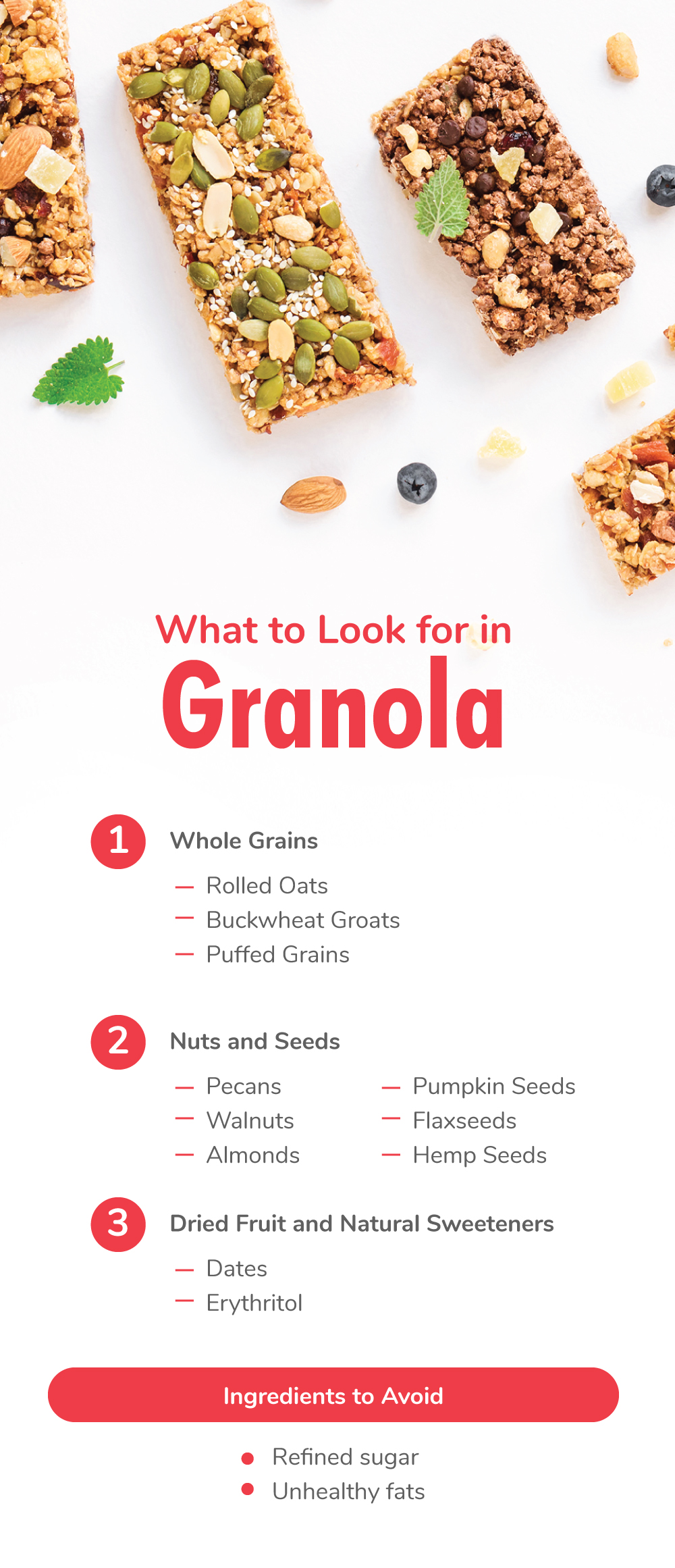
References:
1. https://fdc.nal.usda.gov/fdc-app.html#/food-details/357592/nutrients
2. https://fdc.nal.usda.gov/fdc-app.html#/food-details/170685/nutrients
3. https://www.ncbi.nlm.nih.gov/pubmed/26258713
4. https://www.ncbi.nlm.nih.gov/pmc/articles/PMC5872757/
5. https://fdc.nal.usda.gov/fdc-app.html#/food-details/401887/nutrients
6. https://fdc.nal.usda.gov/fdc-app.html#/food-details/418542/nutrients
7. https://www.ncbi.nlm.nih.gov/pmc/articles/PMC6087457/
8. https://fdc.nal.usda.gov/fdc-app.html#/food-details/384089/nutrients
9. https://www.ncbi.nlm.nih.gov/pmc/articles/PMC6130748/
10. https://fdc.nal.usda.gov/fdc-app.html#/food-details/432662/nutrients
11. https://www.ncbi.nlm.nih.gov/pmc/articles/PMC5867545/
12. https://www.ncbi.nlm.nih.gov/pmc/articles/PMC6567199/
13. https://www.ncbi.nlm.nih.gov/pubmed/24126178/
14. https://www.ncbi.nlm.nih.gov/pmc/articles/PMC6627181/
15. https://fdc.nal.usda.gov/fdc-app.html#/food-details/580059/nutrients
16. https://www.ncbi.nlm.nih.gov/pmc/articles/PMC6826498/
17. https://www.ncbi.nlm.nih.gov/pmc/articles/PMC5756564/
18. https://www.earthyandy.com/recipe/2018/9/11/protein-packed-rawnola-hemp-rawnola
